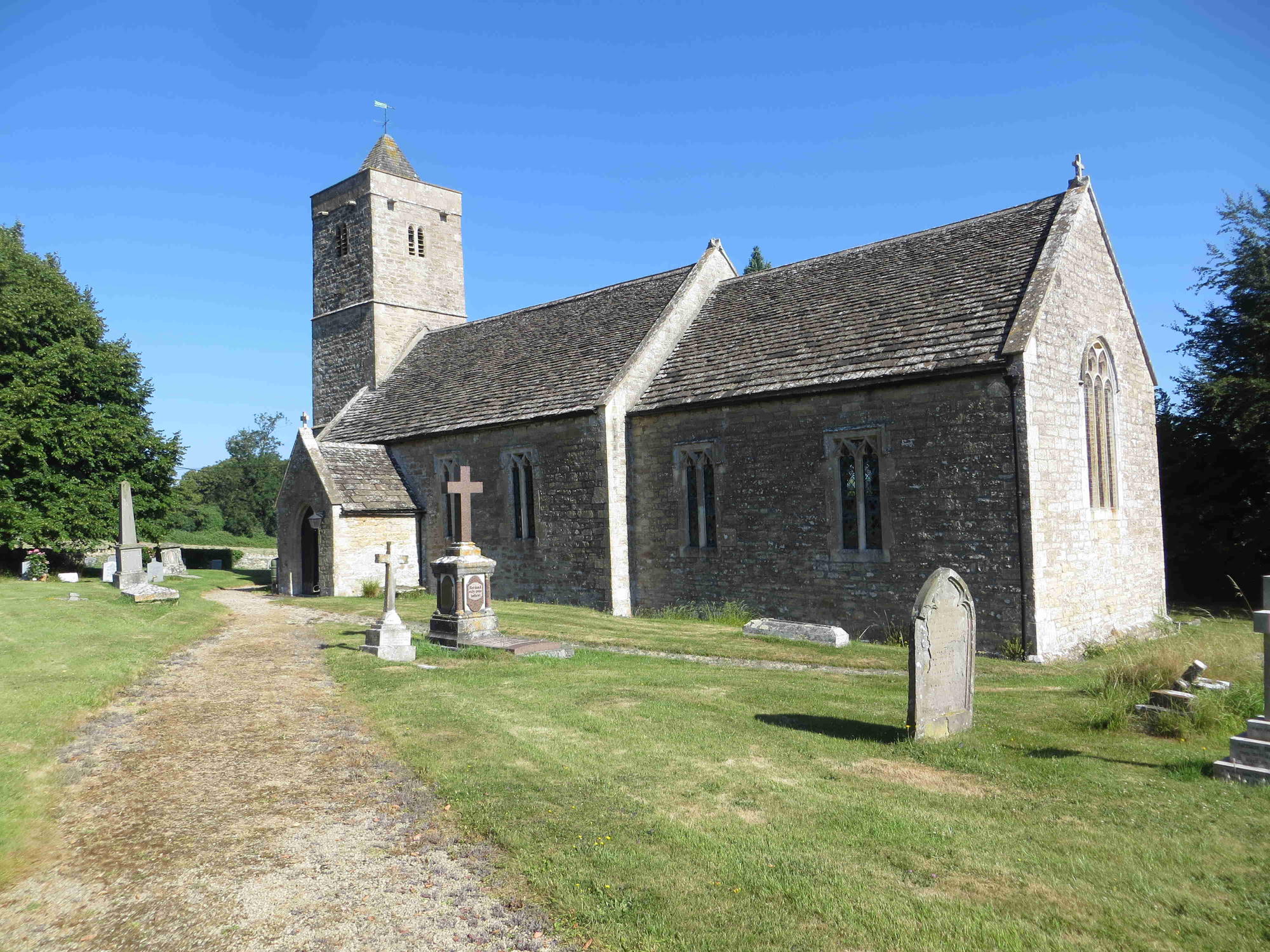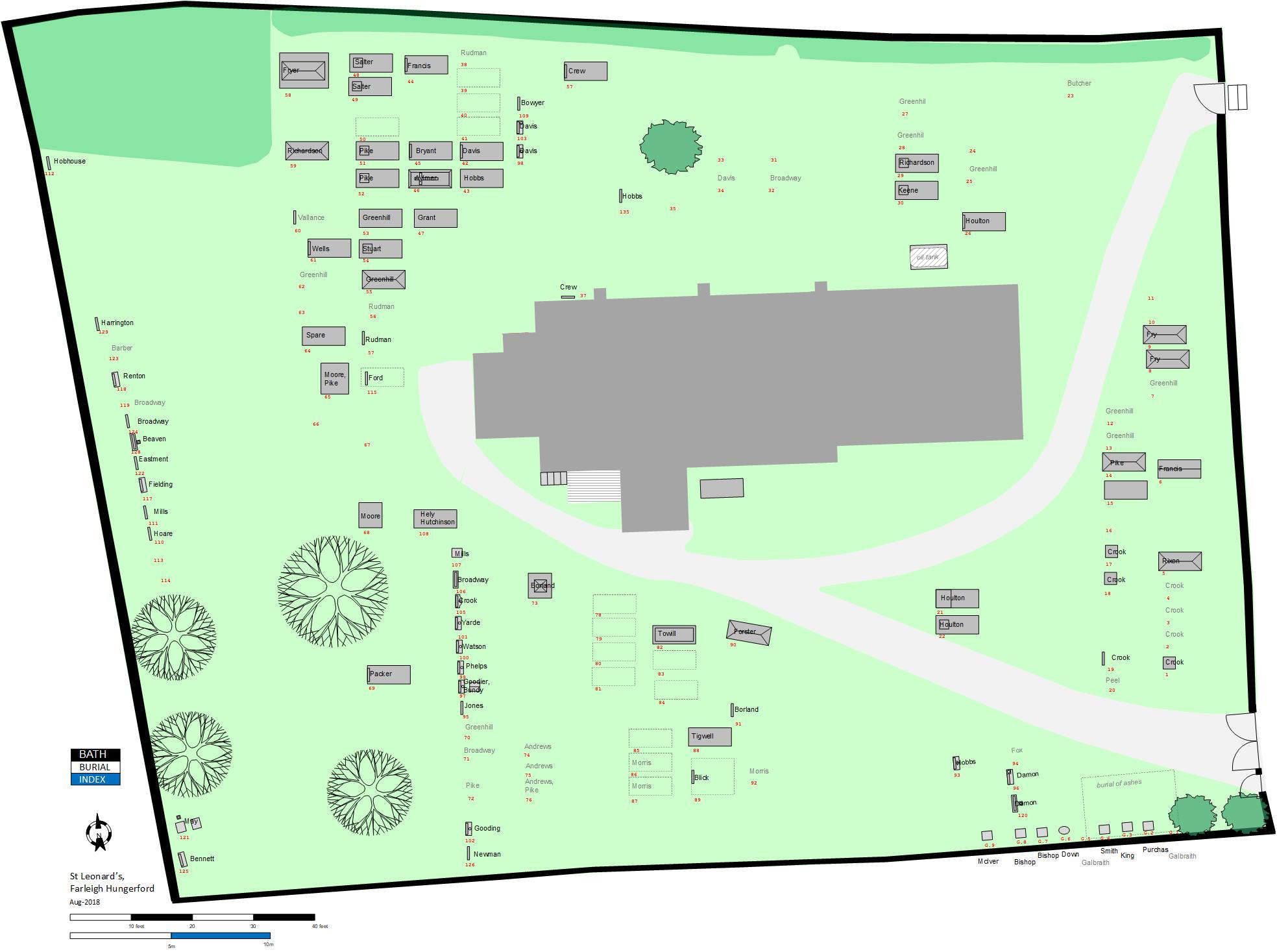
The church of St Lawrence, Farleigh Hungerford
The parish is now part of the Hardington Vale parish which encompasses six parishes in the area.
In the 1841 census the population of the village was 154 (Illustrated London News Sat 14 Oct 1843 p23). A history of Farleigh Hungerford Castle appeared in an article in the Bath Chronicle of Thu 30 Sep 1852 p4. In the same year advertisements for the Illustrated London News appeared in The Globe and other newspapers stating that a future edition would include a number of engravings including one of ‘Ruins of Farleigh-Hungerford Castle, Somerset’.
From The Swindon Advertiser of Sat 3 Jan 1885 p8: “John Britton, in his “Autobiography,” makes the following references to William Smith:- “At the end of the last century, and the beginning of the present, the truly romantic and rustic parish of Farleigh Hungerford, near Bath, was honoured and distinguished by a group of men of science who, though comparatively obscure and of humble habits and pursuits, have become eminent in the scientific annals of the country.”
From the Nottingham Post of Wed 12 Aug 1891 p2 (as well as several other newspapers): "Lord Donington, who purchased the Farleigh Manor estate, in Somersetshire, from Sir Victor Houlton, few weeks ago for £40,000, has decided to resell the whole property, excepting only the ancient ruins and chapel of Farleigh Hungerford Castle, and a few small holdings adjoining thereto. Lord Donington also had an estate at Castle Donington, Leics, and newspapers carried reports of his movement between Castel Donnington and his wooden house at Farleigh Hungerford. When he died in 1895 the Wiltshire Times carried a report of the funeral service which took part in Castle Donington in the hall’s private chapel “conducted with all the pomp of the Romanist burial service”. The burial actually took place in the family vault at Castle Donington (Wiltshire Times Sat 3 Aug 1895 p6). The wooden chalet that he had had built in a field on the road from Farleigh Hungerford to Norton was sold after his death for £19 “to a gentlemen acting on behalf of the Trowbridge Baptist Church . . . for the purposes of a village chapel in the neighbourhood.” (The Tamworth Herald Sat 4 Jan 1896 p6). The Farleigh Hungerford estate was sold again in 1907 to Earl Cairns for £50,000.
From The Wiltshire Times of Sat 10 Sep 1904 p2: “A large three-light stained glass memorial window, the gift of Mr. G. Coombs, of Radstock House, is being fixed at the west end of Farleigh Hungerford Church”

From the Clifton Society of Thu 30 Apr 1914 p14 in a report on the Somerset Archæological Society’s visit to Camerton, Radstock and Holcombe and discussing a stone at Holcombe church: “Over the south porch door at the parish church at Farleigh Hungerford is a stone of similar nature, and very similar lettering. That inscription we know is Saxon, and it reads as follows:- “May He who by the Cross glorifies man protect this church, and may His mother become a refuge for the needy by her prayers.””